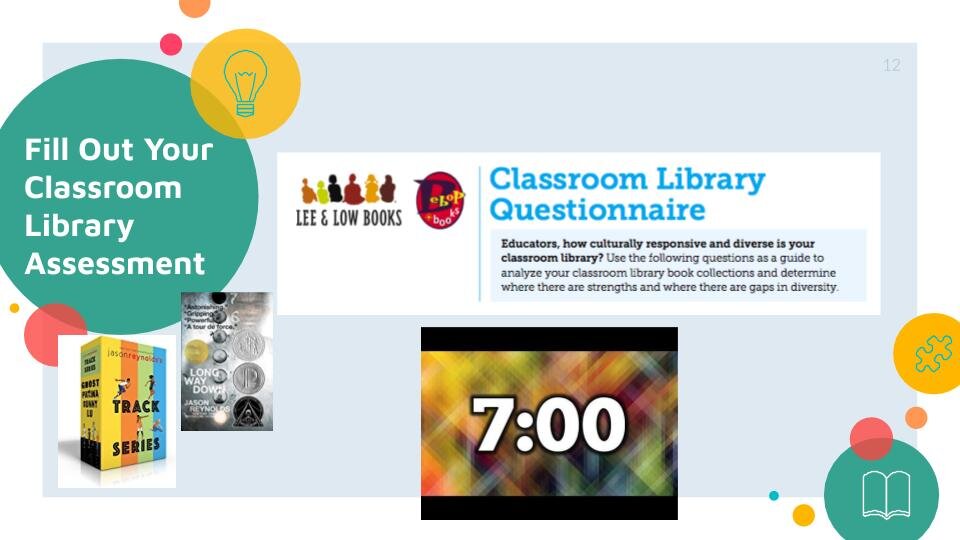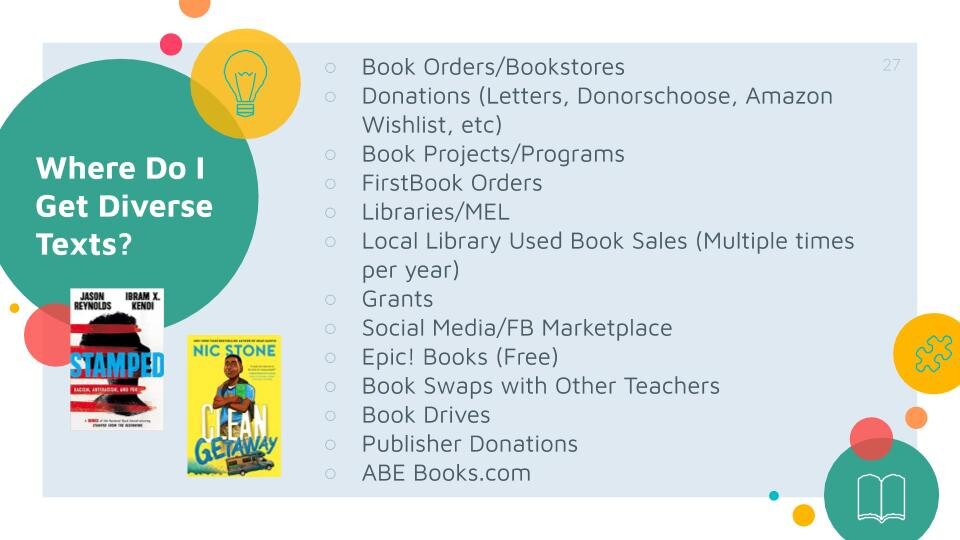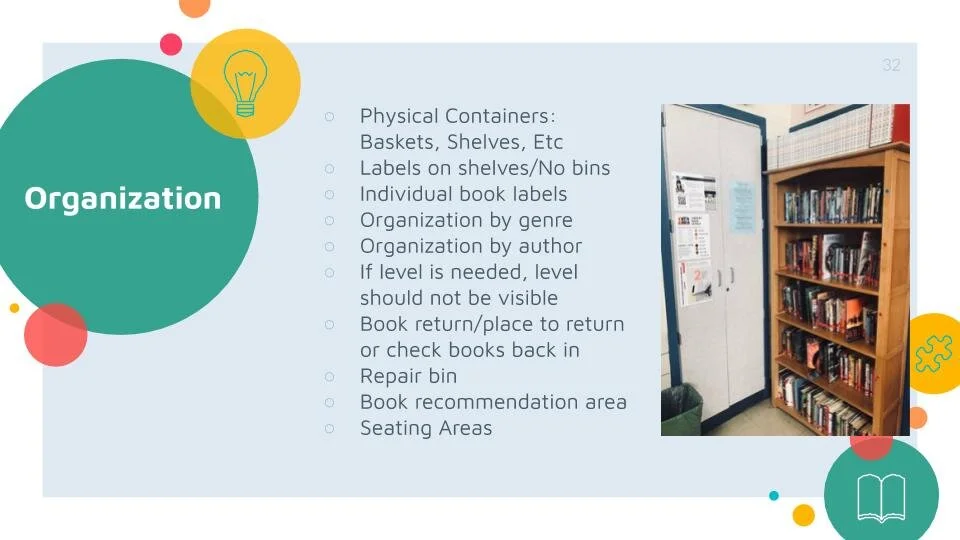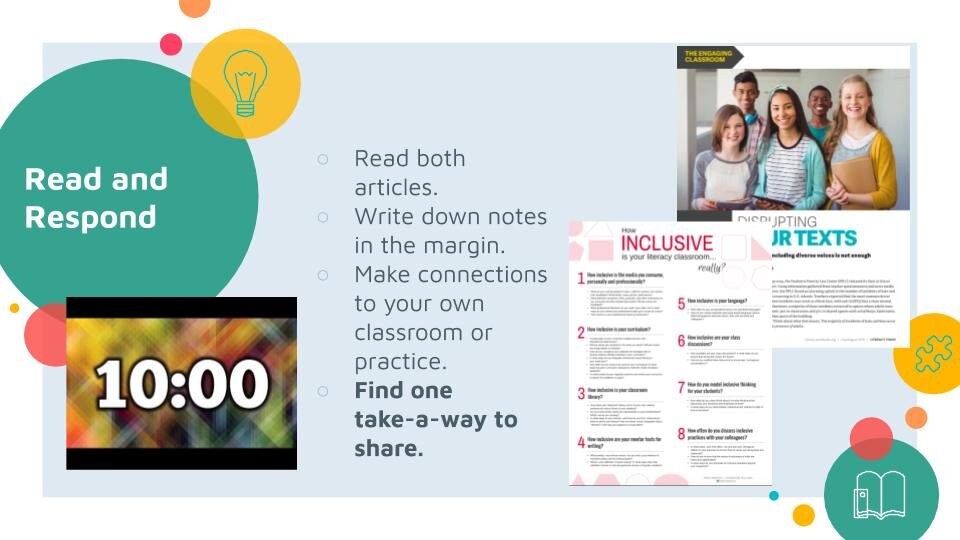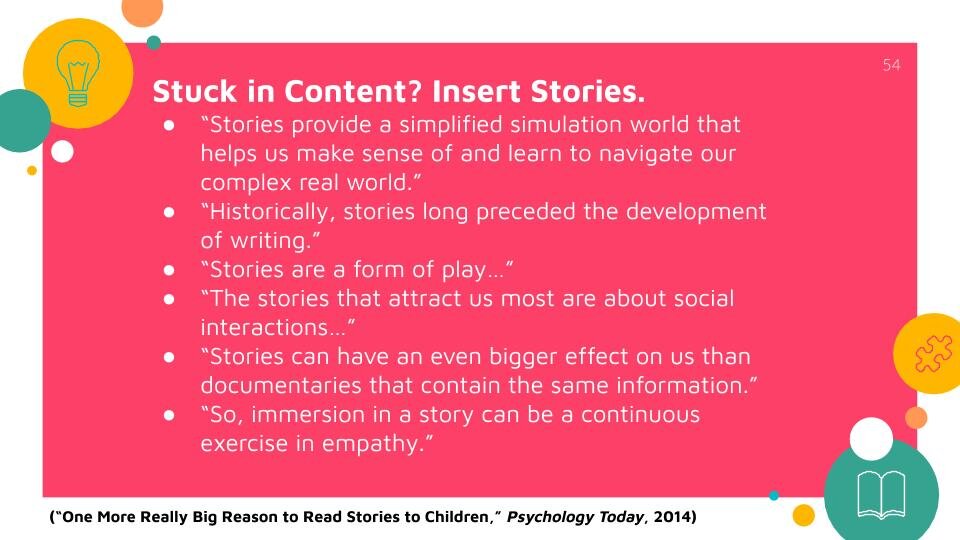Show Up for Young Readers with Diverse Texts in Classroom Libraries
A Training About More Than Adding Books to Classroom Libraries
Recently, I got the privilege of talking to a group of educators in Kalamazoo, MI about diverse texts in classroom libraries. The district had worked at providing small libraries of 25-50 books to elementary teachers, and the goal was to move this initiative to middle schools. I am always a fan of giving books to teachers; it possibly is the best resource we can give all of our classrooms. However, the training I was asked to give was intended to be more than what to do with these books, it was more so how to grow your own library and then show up for reading with your students. Books are simply materials or objects if we don’t show students how to use them. Thus, the term “show up” surfaced in a lot of my preparatory work for this training. Tricia Ebarvia in her blog post, “How do we show up?” cites a moment of epiphany when a fellow teacher stated: “Your racial consciousness determines how you show up” -Tony Hudson, an Equity Transformational Specialist from the Pacific Education Group (PEG). In addition to our racial consciousness and discussing the inclusion of voices, how does our consciousness as a reader determine how we present ourselves to students?
The training’s theme was really focusing on the idea of the teacher as a reader. Equipped with the mindset that the teachers in the room may or may not identify as readers themselves and they may or may not have a classroom library, I began to form my goals for the training based on what they do have: a starter set of books, experiences in the classroom that have shaped them as educators and people, and a passion for children and learning evident in their decision to be in the field of education. While naysayers might say that some teachers are not able or willing to change their mindsets, it is with a strong conviction that I know teachers can do better and be better for the students in their classroom that struggle with reading. We all want to help kids, we just need different avenues of the “how.” This post outlines the three objectives covered within training on diverse texts in classroom libraries. It is a calling to assess the materials in our own classrooms, build those materials to create diverse texts #bookflood, and reminders on how we “show up” for reading every single day.
Materials and Handouts
Tricia Ebarvia Articles: 1.) “How Inclusive Is Your Literacy Classroom…Really?” and “Why Diverse Texts Are Not Enough”
“10 Criteria for Choosing Diverse Texts for Your Classroom” -Writing Mindset
Introduction to the Training
The Welcome Activity: We Are Books
Immediately, I remind them of Dr. Rudine Sims Bishop’s work. Often, in some pieces of training I have teachers who are very familiar with these terms, and other times, I have teachers where this work is new information. I want them to first hone in on the concept of mirrors because as Linda Sue Park in her TED Talk “Can a Children’s Book Change the World?” said,
“In order to find yourself in a book, you first have to lose yourself in a book.”
I ask the participants to introduce themselves as a book that was a mirror for them either in childhood, young adulthood, or adult life. The act of seeing ourselves in books is the first step in understanding our role as readers and teachers who are making materials available to our students.
After brainstorming time, we share our books. I ask them to pull the book cover up on a phone, tablet, or laptop device. I want them to share the images. Jason Reynolds said at the summer American Library Association conference in 2019, “And if my body is a temple like my mama say, then it could be possible that my body could be a library.” The warmup allows us to acknowledge that the information that I have is important because I am a library of experiences, but now I need to examine other books on other shelves to create a diverse atmosphere of learning for my students.
Grace Lin’s TED Talk “The Windows and Mirrors of Your Child’s Bookshelf” is also a great starting place to review Dr. Rudine Sims Bishop’s work on mirrors, windows, and sliding glass doors.
MORE TED TALKS ON DIVERSE TEXTS, CLASSROOM LIBRARIES, INSERTING #OWNVOICES INTO CURRICULUMS, AND #DISRUPTTEXTS
Grace Lin, “The Windows and Mirrors of Your Child’s Bookshelf” (2016)
Linda Sue Park, “Can A Children's Book Change the World?” (2015)
Carlotta Penn, “Lifting Black Voices in Children’s Books” (2018)
Chimamanda Ngozi Adichie, “The Danger of a Single Story” (2009)
Luvvie Ajayi, “Get Comfortable with Being Uncomfortable” (2018)
Share Learning Outcomes
Share Primary Research
I could present more research here on diverse texts and engaging all of our students; however, these three stand out as the ones that I accessed the most on student engagement, building relationships and rapport, and the science behind making learning personal.
Current Publishing Standards-School Library Journal and Lee & Low Books
Assess Your Library
How do we get our classroom libraries to be what we want? The first step is assessment. I love this assessment from Lee & Low Books Blog because it checks off many categories in question. I also like participants to fill out this questionnaire because now we can begin to have a 3-point conversation about our libraries. It is not about us (yet), it is about the books in our libraries. The work is ultimately about what we teach, but the first defense mechanism is to throw up rebuttals like,
“I don’t have enough books!”
“My district won’t give me the resources I need”
“There are so many categories and different types of diverse texts. I am overwhelmed.”
All of these rationales come from a place of validity and causation. However, they all have answers that lead back to the result that we will never have the perfect classroom library. We still have to teach our kids, and we need diverse texts to do it effectively. Once we come back to his observation, we can focus on how to move forward. I like to repeat this mantra: My classroom library won’t ever be perfect. It is a work in progress with each book, each shelf, each month, and each year of teaching.”
Repeat after me:
“My classroom library is not going to be ever perfect. It is a work in progress with each book, each shelf, each month, and each year of teaching”
I then show them an example classroom library from somebody who is doing is pretty well: Colby Sharp. About 3 minutes into this video, a look of discouragement crosses the participant’s faces, and I remind them of the mantra again. Colby even states at the beginning of his video that he has been working on his library for years, but the key difference is not in the number of years that Colby has been teaching, it is in the number of years Colby has spent being focused on adding diverse texts to his classroom library. Focus matters. What we are focused on determines our priorities as teachers. Where are we placing our attention? What matters to us? It is evident in our classroom libraries.
Build Your Library
The second part of the training focuses on building a bigger and better classroom library, and also methods on maintenance including checkout, returns, and repair. I like to start by talking about book deserts because observing where we need to build our libraries in each of our buildings matters. Donalyn Miller and Colby Sharp speak of book deserts in their book, Game Changer! Book Access for All Kids (2018).
After we think about where the deserts are in our building, we brainstorm how to solve the desert problem. I supply this list from my own experience, and then I ask around the room to see if we can come up with other areas. Some people get annoyed during this part of the presentation because it does require extra work to get the books our kids need in our classrooms. We already are doing so much. However, like Colby Sharp, I like to get very clear about my priorities as a teacher. I don’t have time to give extra to all things because I will burnout, but I can give all I have to get books in my classroom because I decided a long time ago that reading matters.
Books matter to me, therefore, I make them a priority in my classroom. I prioritize time, space, and energy -I don’t always have- in order to build my classroom library.
We also talk about organization and checkout systems. There are tons ranging from no checkout system to taking photos of students.
Lastly, I supply a grant template I came up with here on the blog to help them do quick grants like on DonorsChoose sites and district grant programs. The main focus of this section of the presentation is to provide resources on elevator pitches and asset framing. Focusing on the highlights of our students is the driving force behind getting materials we need into our rooms. I really like this article from DonorsChoose if you need a place to start: “Asset Framing: Everything Teachers Need to Know” (2018). Grants are not difficult, yet the extra work of filling them out often drives some teachers away from completing them for their classrooms. If we get comfortable in what makes us uncomfortable, we can unlock different doors in our classrooms.
Show Up for Reading
The last section of the presentation is the main reason why we are gathered here to have training in diverse libraries. Participants don’t need training on how to use books, they need a reminder on the power of showing up for reading each day through the materials we have in our classrooms and in the lessons we are putting together each week. To start this conversation, I have them read two resources from Tricia Ebarvia, high school English teacher, Heinemann Fellow, and founder of the #DisruptTexts movement.
“How Inclusive Is Your Literacy Classroom…Really?”
“Why Diverse Texts Are Not Enough”
I urge them to annotate, mark up, and then discuss the ideas of the articles with the people around them as they are pondering the next steps in building their own libraries and informing their own instruction. My favorite line from the second article is:
“As literacy teachers, we have one of the most powerful resources available to fight against hate and bias: We have stories. The stories-and, more important, the counter-stories, the counternarratives-that we choose to share with students are instrumental in helping all our students be seen and heard, appreciated and understood.” -Tricia Ebarvia, “Why Diverse Texts Are Not Enough”
After we look at the two articles, I start with the power of stories. I remind them of the science level connection we have to storytelling and that stories should drive content. Specifically, OUR STUDENTS’ stories should be driving our content and our instruction.
After we talk about the power of stories, I go through a few examples of putting books into action during our everyday classes and lessons. The three literacy classroom practices I offer to them are inserting activities of reading into a variety of lesson types, book talks, and mentor text work to encourage a love of reading while writing. Links to blog posts with more information are under each image.
If we have time at the end of the training, I provide two classroom examples of inserting literacy into instruction. I specifically chose math and a science example because I want them to see that books and reading belong in all content areas, not just English Language Arts. We talk about how literary looks in each classroom and how it needs to be adapted for individual style and identity. Not everyone is going to be able to have their students lead raps and insert hip-hop into their classroom because it may not be part of their identity; however, they can access that Chris Emdin is making learning personal to his students and providing a creative outlet with an alternative assessment. Emdin uses his version of storytelling to access his students. Again, diverse literacy insertion is aiming at helping teachers access student stories by means of accessing their own at the same time.






